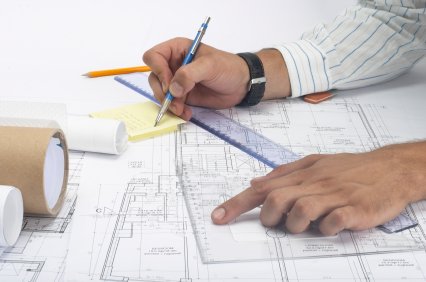Architect Portfolio Showcases That Win Over Clients Instantly
Architect Portfolio Showcases That Win Over Clients Instantly
Blog Article
Understanding the Diverse Career Paths Available for Aspiring Architect
As an aspiring Architect, you have a globe of profession courses waiting for you. Each course provides one-of-a-kind obstacles and chances to use your creative thinking and technical know-how. Whether you're drawn to conventional design or the subtleties of lasting design, there's a specific niche that aligns with your interests. Recognizing these diverse options can form your expert journey, yet which instructions will you pick to discover first?
Traditional Design: Creating Structures and buildings
Typical style concentrates on making structures and frameworks that blend capability with aesthetic charm. Your layouts can mirror cultural heritage, showcasing regional customs while satisfying modern-day demands.
You'll establish skills in drafting, model-making, and website evaluation, allowing you to visualize and communicate your concepts efficiently. Engaging with clients, you'll need to comprehend their vision and translate it into feasible layouts.
Moreover, constructing codes and sustainability practices are important in your job, ensuring your structures are risk-free and eco-friendly. As you grow in your job, you'll discover possibilities in domestic, business, or perhaps restoration jobs, each offering one-of-a-kind challenges. Embracing standard design leads the way for a meeting career that pays tribute to the past while forming the future.
Urban Preparation: Forming Communities and Public Spaces
As a hopeful Architect, you can play an essential duty as a city coordinator, transforming exactly how areas engage and work. By utilizing neighborhood interaction techniques, you'll assure that locals have a voice fit their environment. And also, integrating sustainable style concepts will certainly help create rooms that not just meet today's needs yet likewise secure the future.
Role of Urban Planners
While lots of could assume of architects as the sole dreamers behind structures, urban coordinators play a necessary duty in forming the wider landscape of communities and public rooms. They assess land usage, zoning laws, and neighborhood requires to produce lasting environments that boost high quality of life. By collaborating with numerous stakeholders, you'll assist design parks, transportation systems, and suburbs that promote social interaction and availability. Urban planners likewise concentrate on environmental factors to consider, guaranteeing that developments integrate environment-friendly areas and assistance biodiversity. Your know-how in spatial design and neighborhood characteristics allows you to visualize future growth while preserving social heritage. In this vital function, you'll straight affect exactly how individuals experience their environments, making every task an opportunity for favorable adjustment.
Community Interaction Methods
Effective neighborhood interaction approaches are essential for urban organizers to guarantee that the voices of locals are heard and valued in the preparation process. To promote meaningful discussion, you should prioritize open discussion forums and workshops where neighborhood participants can express their concepts and problems. Use studies and social media sites to get to a wider target market, making sure varied perspectives are included. Teaming up with neighborhood companies can enhance trust fund and facilitate deeper connections. It is very important to offer clear details about proposed projects and decision-making processes, enabling locals to feel enlightened and encouraged. By actively incorporating and paying attention comments, you'll create areas that show the area's requirements, ultimately bring about even more successful and lasting city settings. Welcome openness and continuous dialogue for long lasting impact.
Sustainable Layout Concepts
When creating urban rooms, integrating sustainable design concepts is vital for creating atmospheres that grow both ecologically and socially. You need to start by focusing on energy performance, utilizing products that minimize waste and advertise recycling. Take into consideration integrating environment-friendly rooms, like parks and yards, to enhance biodiversity and improve air high quality. Promoting walkability and public transport can decrease dependence on cars, cultivating a healthier community.
Creating with water preservation in mind is additionally crucial-- think of rainfall yards and absorptive surface areas to take care of stormwater. Involving area participants throughout the planning procedure guarantees that the spaces you produce fulfill their demands and urge social interaction. By accepting these concepts, you'll contribute to dynamic, sustainable city landscapes that benefit everybody.

Landscape Design: Developing Lasting Outdoor Atmospheres
As you check out landscape architecture, you'll uncover necessary style principles that develop attractive and functional exterior areas. Lasting methods play an essential duty in making certain these settings grow while decreasing ecological impact. Plus, you'll discover a range of job opportunities that allow you to make an actual distinction in how people engage with nature.
Design Concepts in Landscape
Understanding design principles in landscape design is important for producing sustainable outdoor environments that harmonize with nature. You'll require to ponder elements like balance, proportion, and scale to ensure your styles feel cohesive and inviting. Incorporating native plants not only boosts biodiversity but additionally lowers water use, making your landscape resilient. Consider the circulation of room and just how individuals engage with it; paths and seating locations must invite expedition and relaxation. Additionally, take note of seasonal modifications, making with materials that enhance the environments year-round (Architect). By prioritizing sustainability and appearances, you can create exterior rooms that enhance the neighborhood and promote well-being. Embracing these principles will establish a strong structure for your career in landscape design.
Lasting Practices Introduction
Lasting methods in landscape design not only concentrate on appearances however also prioritize eco-friendly health and resource conservation. By incorporating indigenous plants, you improve biodiversity and minimize the demand for chemical plant foods and pesticides. Implementing reliable watering systems aids conserve water and decreases drainage, protecting nearby ecosystems. You can create rooms that promote dirt health, such as using organic products and practicing permaculture principles. In addition, including environment-friendly framework, like rain yards and permeable pavements, aids in stormwater management and decreases urban warmth. You contribute to a much healthier earth and offer rooms that cultivate area link when you produce outdoor environments with sustainability in mind. Inevitably, these methods ensure your layouts benefit both individuals and the setting for many years to find.
Profession Opportunities Expedition
With a strong foundation in lasting techniques, landscape architecture uses a selection of occupation paths that enable you to make a purposeful effect on the environment. Urban organizers commonly work together with landscape architects to develop environment-friendly rooms in city setups, enhancing city livability. If you're passionate concerning education and learning, consider coming to be a landscape architecture teacher, motivating future generations.
Sustainable Design: Concentrating On Eco-Friendly Practices
As you discover your career in design, accepting green techniques can establish you apart in a competitive field. Lasting design concentrates on developing structures that lessen environmental impact while improving occupant well-being. By integrating sustainable materials, energy-efficient systems, and sustainable building techniques, you'll contribute to a greener future.
Begin by obtaining knowledge of green qualifications like LEED or BREEAM, which can boost your qualifications. Consider how natural light, air flow, and thermal performance can maximize design. Team up with designers and ecological professionals to innovate options that lower waste and save resources.
Don't neglect the value of community involvement-- engaging regional stakeholders can influence layouts that harmonize with the atmosphere. As customers significantly focus on sustainability, your knowledge in environmentally friendly methods will not only draw in projects however also satisfy your interest for responsible design. Embrace this vital aspect of the career, and view your job thrive.
Historic Conservation: Protecting and Bring Back Cultural Heritage
While you start on your building trip, take into visit the website consideration the crucial function of historical conservation in preserving our cultural heritage. This field focuses on the defense and remediation of substantial structures, sites, and frameworks that tell the tales of our past. By taking part in historical conservation, you'll assist safeguard the architectural tradition that forms neighborhood identity.
As a historical preservation Architect, you'll examine historic relevance and analyze the problem of frameworks. You'll function closely with historians and guardians to guarantee genuine remediation strategies are used. This career path permits you to mix creativity with research study, enabling you to make options that value original materials and craftsmanship.
Your work not only contributes to sustainability by reusing existing buildings yet likewise fosters a sense of satisfaction within areas. Accepting this course will certainly assist you end up being a guardian of history, protecting the stories and appearances that enrich our lives.
Interior Style: Enhancing Indoor Spaces
Historical preservation and indoor design both share a dedication to improving the built setting, however they concentrate on different elements. While historical conservation stresses maintaining a framework's social and historical value, interior style zeroes in on maximizing interior rooms for functionality and looks.
As a hopeful Architect, you'll find that interior architecture permits you to mix imagination with technological abilities. You'll develop spaces that not only look great but additionally advertise comfort and effectiveness. This area involves understanding just how light, shade, and products interact within a room, impacting mood and usability.
You'll work with numerous jobs, from household homes to commercial offices, ensuring that each environment meets the needs of its residents. By prioritizing user experience, you can transform interiors into motivating and useful spaces, making a considerable effect on just how people interact with their environments. Welcome the chance to boost indoor settings and form the way people live and function.
Industrial Layout: Combining Functionality With Appearances
Industrial layout plays an essential role in developing products that effortlessly blend appearances with capability, guaranteeing that what you utilize day-to-day is not just aesthetically enticing but additionally practical. As a hopeful Architect, you can immerse on your own in this area, concentrating on designing everything from furniture to consumer electronics. Your work entails recognizing customer demands, materials, and producing processes, permitting you to create cutting-edge services that enhance day-to-day experiences.
In commercial style, you'll typically work together with designers, manufacturers, and marketing professionals, ensuring that your designs are not just gorgeous but also viable. You'll find out to balance type and feature, prioritizing use without giving up style. By developing your abilities in laying out, 3D modeling, and prototyping, you'll be fully equipped to bring your ideas to life. This occupation course uses a dynamic setting where creativity fulfills usefulness, making it a rewarding choice for engineers curious about forming the products read this post here of tomorrow.
Frequently Asked Questions
What Educational Credentials Do I Required to Come To Be a Designer?
To become an architect, you'll require a specialist degree in style, generally a Bachelor's or Master's. Additionally, you'll need to finish a teaching fellowship and pass the Architect Registration Assessment to exercise legally.
Exist Qualification Demands for Various Building Profession Paths?
Yes, there're certification requirements for different building courses. Architect. You'll need to pass tests, total internships, and occasionally pursue specialized training, depending on your picked focus, like landscape architecture, metropolitan layout, or historical preservation
What Software Program Abilities Are Important for Designers Today?

Just How Can I Gain Practical Experience While Researching Architecture?
You can acquire useful experience by interning at architectural firms, taking part in design competitions, volunteering for neighborhood tasks, or collaborating with schoolmates on real-world projects. These possibilities improve your abilities and build important links in the sector.
What Job Opportunities Exist Outside Conventional Style Firms?
You can discover numerous task possibilities outside standard architecture companies, like metropolitan planning, interior layout, landscape architecture, building and construction administration, property growth, and even roles in sustainability consulting. Each deals special obstacles and rewards.
Whether you're drawn to traditional design or the nuances of sustainable style, there's a particular niche that straightens with your rate of interests.When making city rooms, including sustainable design principles is critical for producing settings that flourish both environmentally and socially.As you check out landscape architecture, you'll uncover vital design principles that develop useful and gorgeous exterior spaces.Recognizing layout concepts in landscape design is essential for creating lasting exterior environments that balance with nature.In commercial design, you'll frequently work together with marketing experts, makers, and designers, ensuring that your styles are not just lovely yet also practical.
Report this page